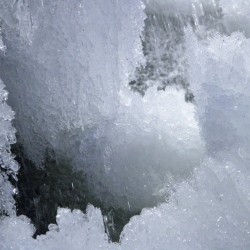
Scientists shone UV light on a simple, frozen mixture of chemicals mimicking the ices that form in space. As it condensed and then warmed up, the ice produced "substantial quantities" of ribose, alongside other molecules. Published in Science, the research is the first to show that sugars can be produced in such a simple way.
It suggests that these critical molecules could form when similar ices condense around dust grains and comets in the vicinity of a young star. Previously, nobody knew how a complex sugar like ribose could emerge from the messy, icy environment of a solar nebula – the disc-shaped cloud that preceded our Solar System.
Some of life’s other building blocks are better understood. Amino acids, which are strung together to make proteins, have been detected in previous, similar laboratory simulations and also detected in samples from comets and meteorites. Sugars are more of a mystery, partly because they have proved difficult to detect.
Dr Meinert and her colleagues mixed methanol and ammonia with water, and subjected the cocktail to low pressure and very low temperature (-195C) in a vacuum chamber. They then allowed it to condense on a very cold surface, just as "pre-cometary" ice might settle around dust grains.
As it condensed, they hit the mixture with intense UV light – such as the young Sun would have emitted – and let it to warm up to room temperature. The resulting residue, when they tested it using multiple "fancy techniques", contained not only ribose, but a veritable cookbook of complex molecules.
Importantly, these products could all be dissolved in water; without that solubility, they could never be incorporated into fledgling life-forms. The results are consistent with evidence of organic molecules recently gathered from the very surface of a comet, Dr Meinert said.
The Philae lander, famously dropped onto Comet 67P by the Rosetta spacecraft in late 2014, detected what one scientist described as "frozen primordial soup", including some of the precursors for making amino acids and sugars.
Now it seems that sugars themselves – including complex ones like ribose, made from a ring of five carbon atoms – could also be surprisingly common in space.
